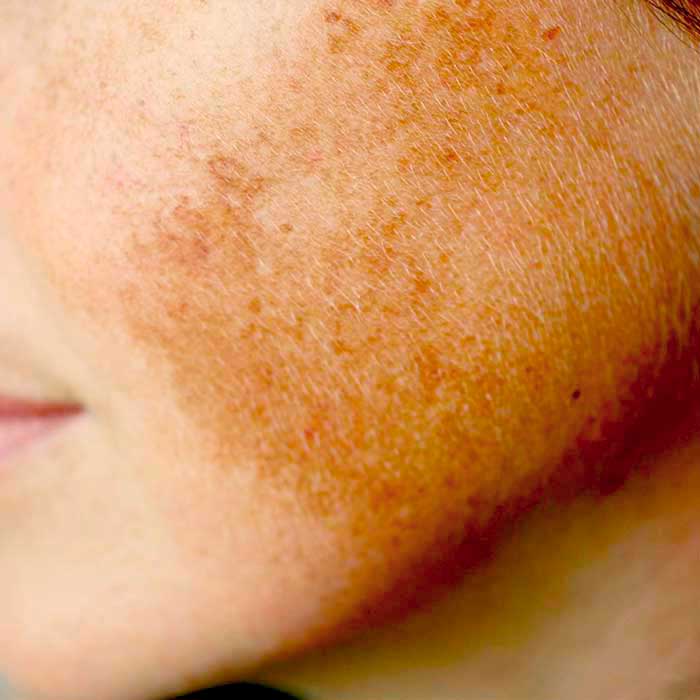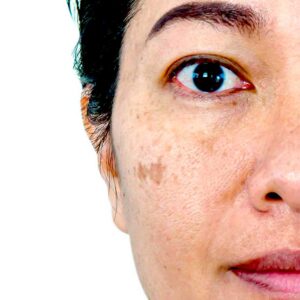Melasma: symptoms, causes and treatment
Melasma, or chloasma, is a pigmentation disorder common in young women. Melanin is a pigment of the melanocytes cell and, instead of distributing itself evenly to create a tanned complexion, the melanin accumulates in patches which usually appear on the forehead, cheeks or upper lip, and often cause sufferers to feel self-conscious.
What causes melasma?
While its specific causes are still a matter of study, melasma can occur naturally though genetics, or can be triggered by some common factors including:
- Pregnancy, in pregnancy, melasma is referred to as chloasma or ‘the mask of pregnancy’
- The contraceptive pill
- Exposure to the sun
- Phototoxic reactions to perfumes, cosmetics or sunscreens
Melasma is most often observed outside of these presumed triggering causes, i.e. in subjects who are not pregnant, who have not taken contraceptives, have normally exposed themselves to the sun and have not used cosmetics.
Melasma and stress
We can safely assume that melasma pigment accumulates in areas of the face – such as the forehead, cheeks or around the mouth – where there are branches of the facial nerve. If this is the case, it means that there is a link between the excitation of nerve endings in these areas and the appearance of melasma. Such nerve excitation can be linked to stress and, indeed, it is common for melasma to appear after a prolonged period of psychophysical stress.
How to treat melasma
Micropeeling can help to lighten the melasma.
- Apply seven to ten drops of Glicosal Lotion every evening. Massage with light pressure all over the face.
Glicosal Lotion has exfoliating properties which stimulate skin regeneration and the removal of excess pigment without causing irritation. Skin lightening occurs slowly but naturally. For a more intensive exfoliating treatment, Dermaclub’s dermatologists recommend combined micropeeling.
Use the gentle, non-foaming Eudermic Cleansing Base as both a make-up remover and cleanser.
To cover melasma, use Argillina Color mineral foundation, which has been specifically designed to allow regular skin perspiration.
Melasma treatment can be particularly difficult because if irritation occurs on the skin, the dark spots worsen. Therefore, laser therapy; intense pulsed light treatments; radiofrequency or lightening treatments with aggressive peels only aggravate melasma.
If, during treatment, dry skin appears, apply a small quantity of Extreme Emollient Ointment every morning to any affected area and massage well.

Sun protection
Contrary to popular belief, the use of sunscreens with chemical filters is useless because the melasma pigment is generated even with the application of high SPF sunscreen. Applying sunscreens therefore only inhibit Glicosal Lotion’s micropeeling treatment, thereby prolonging melasma symptoms.

















